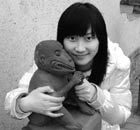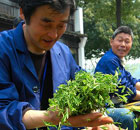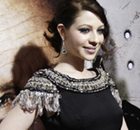-
-
China Daily E-paper
Jeffrey Wasserstrom
Shanghai Expo/Shanghai Disney: Some Historical Connections
By Jeffrey N. Wasserstrom (Chinadaily.com.cn)
Updated: 2010-02-23 10:38
 |
Large Medium Small |
Needless to say, the Shanghai-Disney story, which earned a lot of headline space last fall and has sometimes been in the news more recently (late last month, for example, when a plan to build some budget housing near the site was announced), is one that I've been following with great interest. How could I not, when the University of California-Irvine, where I teach, stands closer to the original Disneyland theme park than any other major research university? When one of my previous books, Global Shanghai, 1850-2010 (Routledge, 2009), not only looked at the history of China’s biggest Yangzi River Valley city, but also speculated about what the future held in store for that fast-changing metropolis? And when my forthcoming book, China in the 21st Century: What Everyone Needs to Know (to be published by Oxford University Press in April), is concerned with many issues that can be linked in some way to the reports about Shanghai-Disney, since it looks at least in passing in such things as the role that hi-tech forms of entertainment are playing in Chinese culture, the increasingly intertwined nature of the American and Chinese economies, and the parallels between the U.S. at various points in the past (including the 1950s, when Disneyland opened) and the China of today?
There’s also another reason I’m intrigued by the story, which is flagged in the title of this article. Like many other people who live in or simply regularly visit and are interested in Shanghai, I’ve been fascinated by what the upcoming World Expo, which I deal with in both of the recent books just mentioned, has been doing to and could do for Shanghai, and, like many other people who have taught and written about World’s Fairs, I’ve thought a lot about the complex ties between the International Exhibition lineage that the 2010 Expo will continue, on the one hand, and Disney theme parks, on the other. Curiously, though, in the media coverage of the Shanghai-Disney story, the ties between World’s Fairs and theme parks has often been underplayed.
Yes, there have been brief allusions in some Shanghai-Disney news articles to the fact that the city is about to hold an Expo. Yes, some references have been made to the fact that the World’s Fair planned for 2010 has already involved and the theme park that could open as early as 2014 will require a lot of land to be acquired and a lot of construction completed. And, yes, there have been scattered comments about how the Disney theme park could keep a local tourist boom going after the Expo ends in October of this year.
These Expo-Disney angles all have relevance, especially the land expropriation/construction boom ones, as these both raise the question of how much more development the already hyper-developed metropolis by the Huangpu River can take, whether those being asked or forced to relocate are being offered appropriate compensation, and how much new building is just too much for a city that has already more than doubled in size since I lived there for a year in the 1980s. Still, at least for the historically minded, the Expo-Disney connections worth pondering go deeper.
Consider these tidbits:
1) Walt Disney’s father worked as a carpenter at the 1893 Columbian Exposition, the Chicago World’s Fair that is famous for many things, including the premiere of the first Ferris Wheel. Disney grew up hearing stories of the wondrous “White City” created in Chicago back in 1893, which generated a great deal of international interest and was visited by many American visitors. (The oft-repeated claim that one in five people living in the U.S. attended the World's Fair should, however, be treated as a myth. For as historian James Gilbert stresses in an important new book on a different early World’s Fair, audience figures like these always need to be viewed with skepticism, since numbers were often systematically inflated through such ruses as counting it as a "new visit" each time an employee at an Expo entered the grounds to go to work. See Gilbert's Whose Fair? Experience, Memory, and the History of the Great St. Louis Exposition, which was published last year by the University of Chicago Press.)
2) Walt Disney was deeply involved in the planning of the 1964 World’s Fair held in New York (an event I went to as a young child) and there was talk at the time of it becoming an East Coast equivalent to the Magic Kingdom he had recently opened in California. In the end, this didn’t take place, but when Epcot Center opened in Florida, as part of the Orlando Disney complex of parks, it had many aspects reminiscent of a World’s Fair, including separate sections devoted to the food and culture of individuals countries.
3) Several attractions created for the New York World’s Fair, including “It’s a Small World,” gained new leases on life after the event at Disneyland. (And you can now see a version of that particular 1964 World's Fair creation at Euro Disney out of Paris, as well as at the Tokyo, Hong Kong, and Orlando Disney parks as well.)
4) Japan got its Disneyland, the first in Asia, after hosting the first Olympics held on the continent (the 1964 Tokyo Games) and then the first World’s Fair held on the continent (the 1970 Osaka Expo). One different there, of course, was that, in contrast to the Chinese situation, Japan’s Olympic city got the Disneyland, while the Expo one of Osaka had to settle for a Universal Studios.
5) Paris is, perhaps not coincidentally, both the only European city with a Disney park and the city on that continent that is most closely tied to the World’s Fair lineage, as well as with early “multi-sensory amusements” more generally, a term that historian Vanessa Schwartz uses to describe everything from wax museums to international exhibitions in her excellent Spectacular Realities: Early Mass Culture in Fin-de-Siècle Paris (University of California Press, 1999). London may have started the modern World’s Fair tradition with the Crystal Palace Exhibition of 1851, but Paris hosted many of the first great events belonging to this lineage and its most iconic structure, the Eiffel Tower remains the most famous artifact left behind by any expo.
As the Shanghai Disney story develops, it is worth keeping these sorts of connections between the World’s Fair and theme park traditions in mind. This is especially true given that the Expo is being promoted within China as an event that carries into a new century the lineage of which the 1893 Chicago World’s Fair that employed Disney’s father is part, and that Shanghai has so often been compared to Paris, a city that is so tightly connected with both the history of international exhibitions and the international spread of the Disney theme parks.
Jeffrey N. Wasserstrom is a Professor of History at the University of California, Irvine, and the author, most recently, of “China in the 21st Century: What Everyone Needs to Know” (Oxford University Press, April 2010).
* Note: an earlier version of this commentary was written for and published at "The China Beat" blog.









